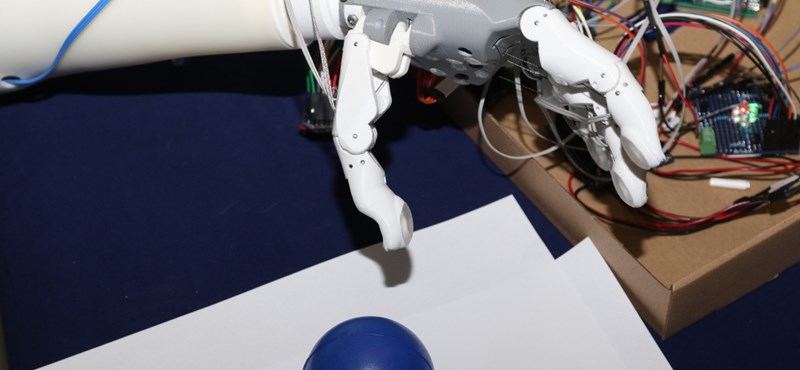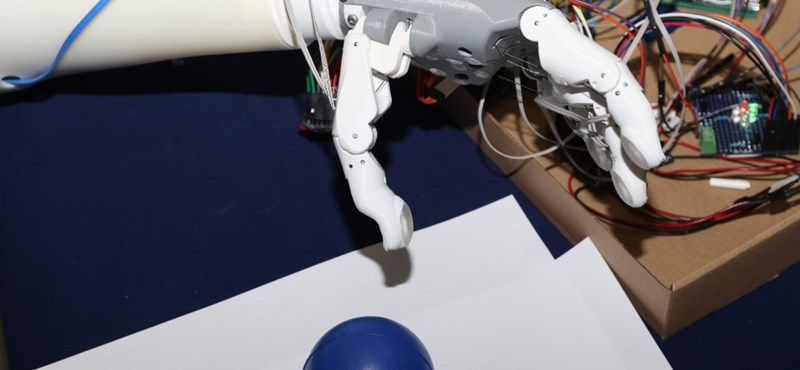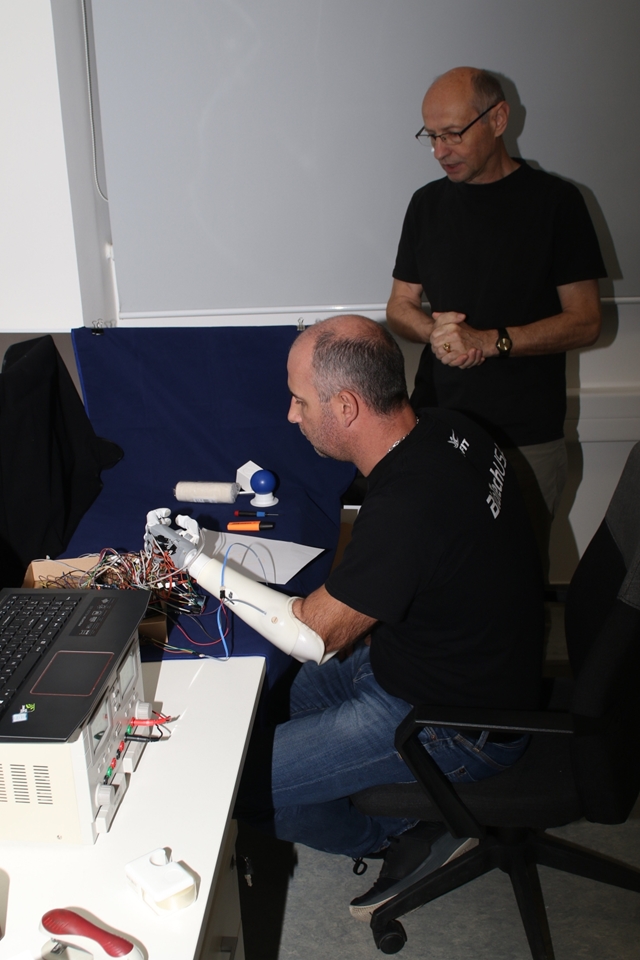


The 3D Center of the University of Pécs and the professional support company Corvus-Med kft. are working on a "self-learning" artificial limb controlled by artificial intelligence. research and engineering team. The upper extremity prosthesis learns the wearer's frequent movements and gestures, and it is hoped that in the future it will be able to reach the most needy through TB support. We inspected the working prototype.
Catching a ball, unscrewing the cap of a bottle, putting on a sock - those who lose their forearm due to an accident, illness or birth defect have to cope with routine tasks that are unconscious to most. All of this affects more than 500,000 people worldwide, and since a significant part of the reasons leading to amputations are the result of accidents and diseases (infections, malignant tumors, vasoconstriction) that are increasingly affecting the aging society, this number is growing rapidly.
Although the rapidly developing limb prostheses are a great help in replacing the missing body part, even the most modern models have many limitations: it is difficult to learn how to use them, they are not necessarily able to perform really delicate hand movements, and wearing them for a long time is particularly tiring. A new development in Pécs, the learnable Ember Arm, aims to bridge these problems.
Artificial limbs have undergone a huge transformation over the past decades, and in addition to increasingly sophisticated cosmetic prostheses, functional prostheses have also appeared for a long time, which can replace the functionality of a lost limb at different levels and in different ways. In addition to simple mechanical solutions, which are only capable of opening and closing the hand, so-called myoelectric prostheses are already in use, which work through electrical signals generated by human muscles.
As Csoba Csóka, who brought together that development and has several decades of experience in the field of making artificial limbs, Corvus-Med kft. its managing director explains, all this is possible because the muscle groups are preserved even after amputation or in case of developmental disorders, and if the electrodes required for the prosthesis are placed in the right place, the electrical signal generated by the muscle contraction is transmitted to the prosthesis. Such a so-called bionic artificial limb is already capable of finer movements, but it still has serious limitations: it takes a long time to learn and it is difficult to fine-tune. "Most currently available limb prostheses come with a pre-set package: they can, say, 30 common types of movement, and the number of these cannot be expanded," describes the situation, Luca Tóth, the project's medical consultant. The Pécs team approaches the issue from a different angle.
Says Ádám Schiffer, associate professor of the PTE Faculty of Technology and Informatics, coordinating the development of the prosthesis software. An artificial intelligence, i.e. a self-learning system, is responsible for all of this, which constantly monitors the activity of the user's muscles. Although when you hear the word artificial intelligence, you might even think of supercomputers, a Raspberry Pi costing a few tens of thousands of forints already has the computing capacity required for the task, and such a minicomputer is included in the device, adds Dhakshinamurthy Devaraj, who leads the development of the prototype.
The customizable prosthesis can be controlled and fine-tuned through a mobile application or the display placed on it, and its use can be practiced using virtual reality or even different games. All of this can be especially useful for children, among whom according to a survey , the rate of "prosthetic leavers" is already high, 35 percent, i.e. those who find their artificial limb so uncomfortable, cumbersome and useless that they give up using it.
This is also true for a quarter of adult users, and according to the project's medical advisor, Luca Tóth, these ratios may be even worse in reality, quite simply because the vast majority of users are not satisfied with their prosthetic skills and find its regular use demanding and tiring. From this point of view, it is important that the prosthesis developed in Pécs is lighter than the majority of models on the market, despite the built-in minicomputer, and although this advantage is only 10-20 dekagrams, according to the makers, everything is of enormous importance in case of long, all-day use. Moreover, thanks to the 3D printing production technology, the individual pieces can be completely customized, which can be especially important for children who are averse to prostheses.

The prosthesis also has "tactile feedback", i.e. there are sensors at the end of each finger, which give feedback proportional to the strength of the grip, simulating touch. All of this can be particularly important in connection with the acquisition and maintenance of delicate hand movements, as the brain is able to adapt to them based on continuous feedback.
The biggest advantage of the development in Pécs is that, while the price of devices like it, capable of moving each finger separately, is around 13-15 million forints, the price of the model developed here is significantly cheaper, around 8 million forints - which of course is still relatively few. allowed for. TB support can be at least a partial solution, according to the current procedure, all of this can be obtained through an individual license in the case of bionic prostheses, which is why the team is currently working on getting the Ember Arm on the list of supported devices.

In addition to the final prosthesis, the Pécs developers are also working on a so-called learning module, with the help of which rehabilitation can begin as soon as possible after the loss of a limb. Thanks to a much simpler model than the final version, it is easy to learn the operation of the prosthesis, while a virtual reality system and playful teaching make adaptation easier for children.
Ember Arm currently has a working, user-tested prototype. The following months will be about fine-tuning the model, and the production version may be ready in just half a year. However, with the completion of the technical work, the team does not yet reach the finish line, as after this comes the search for investors and the conduct of wider clinical trials. Péter Maróti, the professional manager of the PTE 3D Center, now calculates that it will take about a year for the Ember Arm to be on the market.
Source: HVG.hu